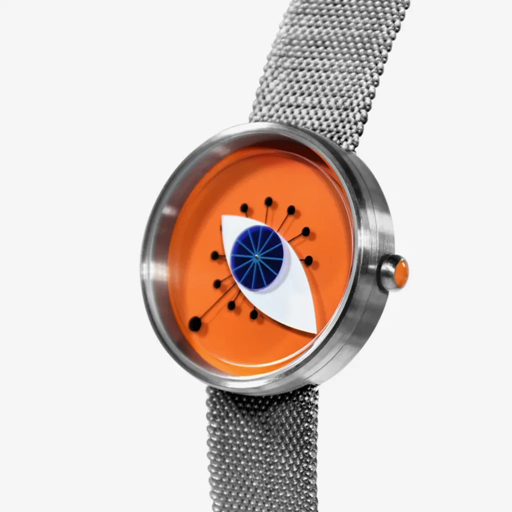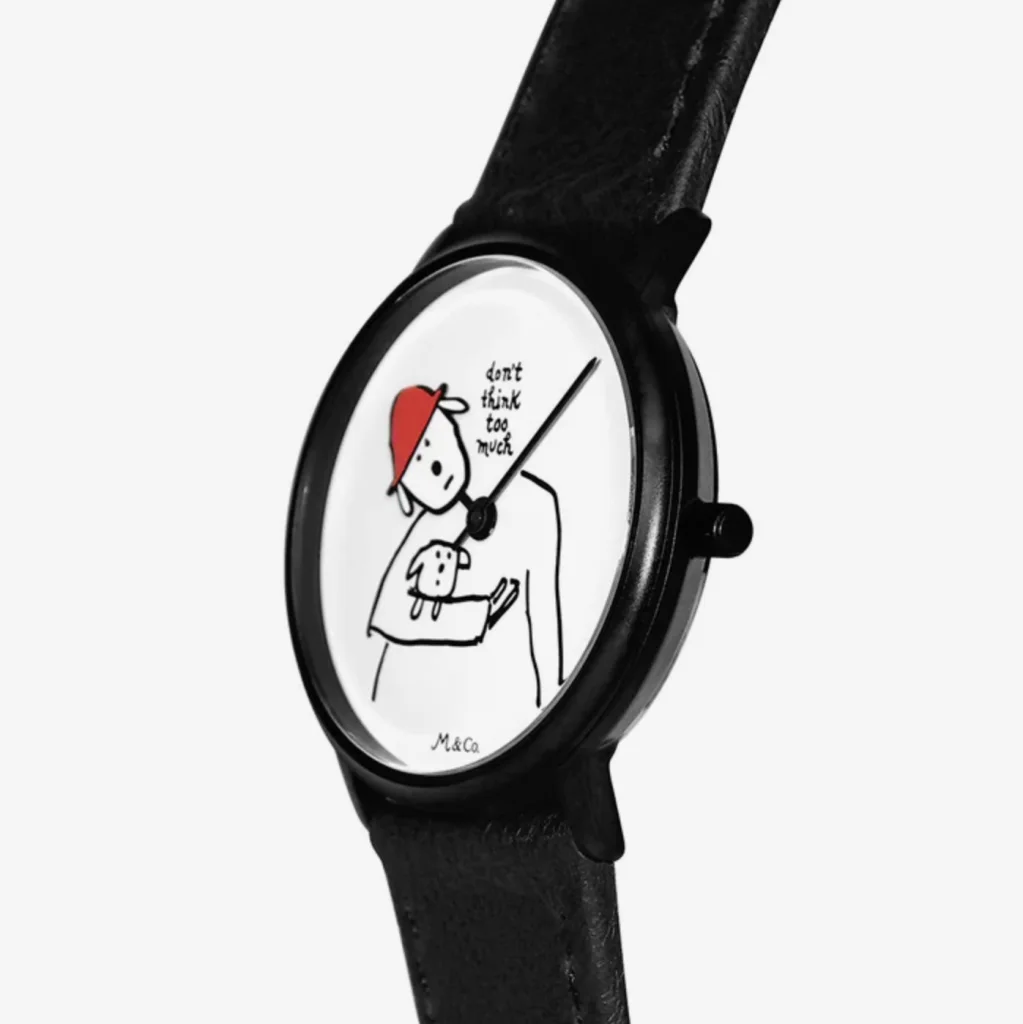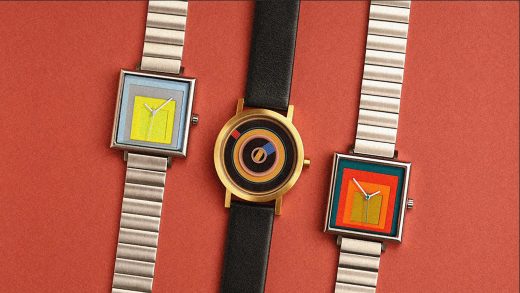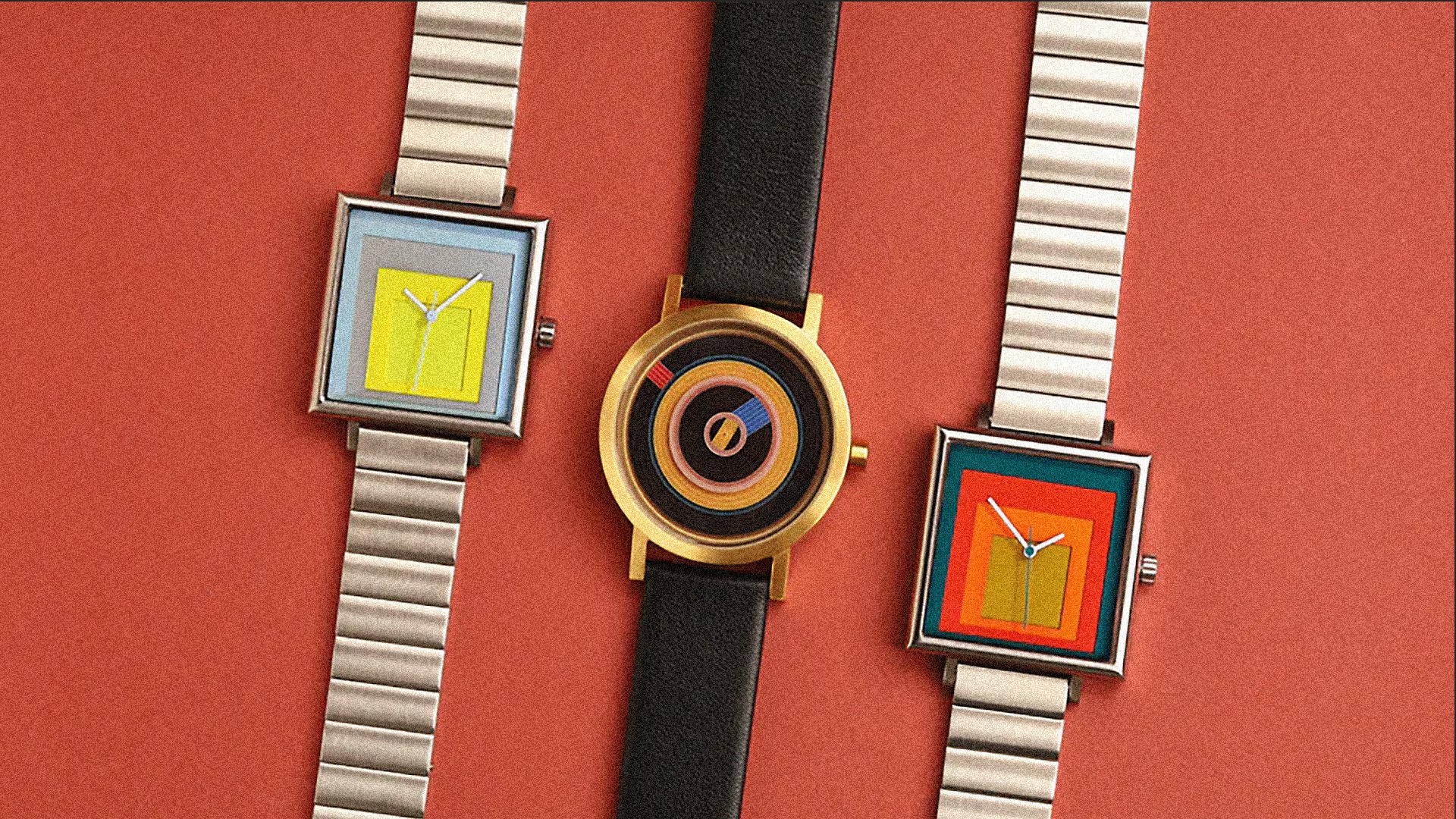These watches are affordable, wearable pieces of art
July 08, 2024
These watches are affordable, wearable pieces of art
Projects Watches is an antidote to unattainable luxury.
You might think that the first watch in more than 25 years from Maira and Tibor Kalman’s storied M&Co brand would command a punishing sum. Or that sleek timepieces featuring Bauhaus legend Josef Albers’ artwork would likewise be forever relegated to your Pinterest page. In a world where “design” goods are off the table for so many cash-strapped consumers, you’d be forgiven for doing a double take at the humble price tag of those releases from Projects Watches: $159 and $199, respectively.
“We’re running a subversive campaign over here,” says CEO David Worn, whose stated goal is to fuse art and beauty into the everyday—and to make it affordable so it scales. “Aesthetic contemplation is like caring. We need more of it in our lives, and less junk. Projects Watches is our effort to try to figure out how to do that.”
As a consumer, I freely admit to being seduced by junk. I’ve placed a Temu order. I’ve been hoodwinked by flimsy plastic products galore on Amazon. But last year, I bought one of Projects’ Albers watches on a whim—and squinted suspiciously when it arrived in a heavy box, elegantly packaged, complete with a card detailing the artist and his work. As the months went by and my Temu wares quietly fell apart and died an ignoble death one by one, my Albers watch dutifully (and surprisingly) kept time—and has held firm on my wrist since.

A wearable piece of art
In 2020, Worn, an investor and entrepreneur, took the reins of Projects Watches from Jack Markuse, who originally founded the brand in the 1980s. Back then, Markuse, a distributor for the Italian home-goods store Alessi, partnered with prominent architects like César Pelli to develop the company’s first watches. As time went on, the brand would become known for its design-y, playful, and utterly unique offerings on the timepiece landscape. From the outset, Worn says, they were designed to be affordable—which wasn’t such an anomaly back then.
“This idea that the beautiful, the sublime, ought to just be in your day-to-day used to be a thing,” he says. “It wasn’t [the norm that you would] have to pay 50 times more for something that’s beautiful to be in your environment.”
Worn says the things that make watches expensive aren’t the same as what makes them interesting to look at. Projects uses stainless steel cases, IP coating for durability, and Japanese quartz movements—which Worn notes causes some watch aficionados to dunk on his brand. Sure, he says, his watches aren’t “handmade by Swiss gnomes,” and they don’t have a bunch of rare Earth metals in them, but when it comes to the Japanese quartz movement, “Yeah, we do [use them], because they keep better time than anything else. And it doesn’t cost very much. And as a result, I can put all of my energy in paying extra money to the Albers foundation . . . and I can make something super beautiful, and I can spend more money on doing crazy things. We’re not trying to create a watch. We’re trying to create a wearable piece of art.”

Artistic trickle-down effect
In light of dwindling traditional income streams for artists, it’s becoming increasingly critical for them to figure out how to manifest their work in physical products. But artists don’t typically have access to, say, a global supply chain for a watch. And that’s where Projects can play a role.
“We think it’s important for there to be beautiful art in the world,” Worn says. “We think that requires there to be artists. Our small contribution is to partner with real humans to help them ply their trade.”
Ultimately, the partnership is good business for both Projects Watches and the artists. Worn says he issued his highest share for an artist last year, and the brand at large has had “extraordinary growth” over the past two years, with business increasing tenfold. Projects Watches are available at select institutions and museums such as MoMA around the world, but 85% of the company’s business is direct-to-consumer sales. With a team of 10 spread across the Midwest and the East Coast, they create around 12 new watches a year, covering a wide range of graphic styles. Some are partnerships with foundations, some with iconic artists such as Kalman; and others, emerging creatives like Riki Prosper.
As he looks to the future, Worn says he is exploring innovations outside the current overseas supply chains that could allow for nimbler production and more experimental runs. He’s also interested in pursuing complementary products beyond watches (to that end, he’d love to get a Tibor Kalman paperweight back on his desk).
He describes the current DTC atmosphere that defines his business as “brutally hard and competitive”—and says he worries about the viability of Projects Watches in light of “cheap garbage” in the competitive marketplace and the results of “low-effort, generative AI stuff.”
“I want so much more peak humanity in my life. That’s my new focus,” Worn says. “I want to be surrounded by peak human stuff, whether that’s writing or design or craftsmanship . . . I can squint my eyes and see that world. And it’s a world that I would rather live in than to be surrounded by Temu shit or AI-generated listicles. I don’t want to live in that world.”
ABOUT THE AUTHOR
Fast Company
(7)



